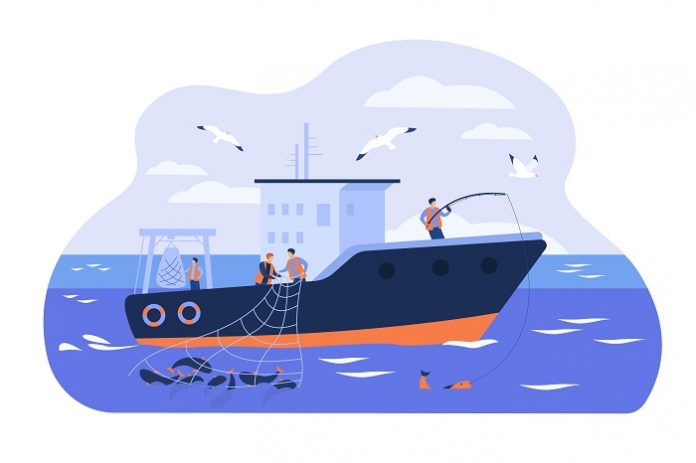Entrepreneurs come up with business ideas depending on the need of the people around them. It normally starts with a demand, where economists even of earliest times would suggest, before creating a supply. Initially, location, budget, and knowledge about the fishing business is a must, non-negotiable.
Any entrepreneurial attempt can be risky, especially if the strategy is not well-planned, organized, and implemented. A profitable commercial fishing business goes through the following considerations:
Market Study
A business plan is always the foundation of every commercial company. It involves feasibility works, target clients, production goals, and manpower. A prime commercial fishing business starts with a written document which covers pre-planning, implementation, and post implementation review.
A well-written market study tackles appropriate courses of action, Process Map, down to the progress monitoring whether each phase of the business plan took place or happened as expected.
Nearby Competitors
While learning from the competition is helpful in most times, it is essential for an entrepreneur to learn how tough or how weak the other party is. The chance of clientele monopoly is possible, considering the other company started the commercial fishing business earlier. Experience and exposure to the market is something that should not be underestimated by a newbie businessman.
On the other hand, a competition might reach out to you, unless you communicated with them prior to your business launch. A friendly division of market can be beneficial among entrepreneurs but harmonious relationship among companies providing the same services is not common.
Crew Hiring
Provided the funding needed to start the business is not an issue, the next task will be employing deckhands to take care of the harvest, supplying clients with it, and maintenance of the fishing vessels. This would depend on how small or how big the business is. In here, filling in of positions would include advertisement, interviews, and contract-signing processes.
Organic word-of-mouth can help spread the news. Recommendations and referrals from friends and families might help but it is still best to filter manpower according to who you think would suit best to the workforce required.
Focus Fish Farm
While it is nice to have a wide variety of options, a good commercial fishing business should have focus. 2 or 3 options are ideal. Production of fish depends on the season and the type of weather you are in. To fetch good returns, economically large production of the target fish harvests is one of the most important point to look into.
For instance, Catfish, Tuna, or Salmon are the most abundant in the area where you intend to start the commercial fish business, you should invest in a fish farm essential to the growth and production of the mentioned species. This is to ensure consistent production for supply to your customers.
Registry and Licenses
Just like any other businesses, permits and distribution documents must be considered. From registering the business name, to obtaining clearances, down to inspection of the business facilities - these are roles a startup businessman should also go through.
Once these are all ironed out and duly signed by the authorities, the commercial fishing business can now start seamlessly, without having to worry about the authority tailing your fishing boats, your fish farm, and your production activities.
Commercial fishing has been in the lucrative business industry for quite some time, and it surely has proven to have been known to be a global business choice. Fish, being a food, which is part of every household’s vital need to survive, never goes out of choice. When you visit wet markets and seafoods sections among grocery stores near you, you can tell that there will always be a need for it.
Commercial Fishing Methods
Commercial fishing companies engage different types of obtaining there produce. Some the most famous ways to get them are as follows:
- Trawling – the most common among the large-scale fishing is when a net is thrown and dragged to catch and filter only the large catches. The boat is designed not to intervene with the net below. Rather, it has steel boards for easy hauling and having the fishes of the net into the boat.
- Long-lining – the most environment-friendly manner of commercial fishing is done by unreeling long lines up from one end of the fishing boat to the other. These lines with small fishes as bait are left on the waters for a day, and eventually retrieved after a considerable period.
- Tangle and Gill Nets – nets and drift screens are used in this method. These are wall-like fishnets hung at the side of the boat where target produce tangled themselves during the process. These suspended nets can be small-scale or large-scale. It drifts and moves along with the tide, and it goes around wherever the fishing boat heads unto.
- Crab and Lobster Pots – cages and traps designed to let crab and lobsters in with little to no chance of going out. Fishermen tie it with a rope and lower the pots down to the seabed, marks the location, leave it off, and return hours later to fetch whatever bycatch happened to get inside.
- Seining – targeting a school of fish found in the shoals, this method is done by fishermen using a purse net where it is thrown, and string are drawn together to capture a normally abundant species of fish inside. Environmentalists prefer this type of fishing as this do not pose any damage to the seabed at all.
As a startup entrepreneur, deciding over which fish to farm and what manner of fishing to employ requires basic fishing knowledge and sustainable resources. Results may be rewarding, but perseverance and patience during the process should be part of the success formula. Coastal businessmen have either love of the sea and appreciates the gift of nature the commercial fishing industry has to offer.
Local commercial fishing businesses grow in areas where fish is naturally abundant, and the community is all but seafood-loving. Consistent supplies are just around the sea, all you need to take care of, is running the business.










